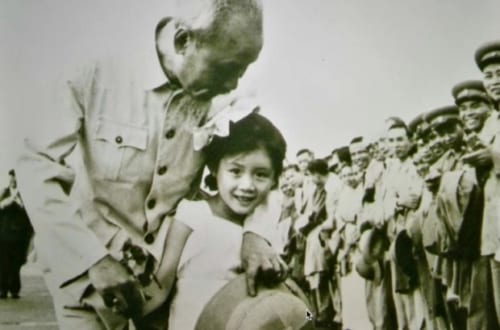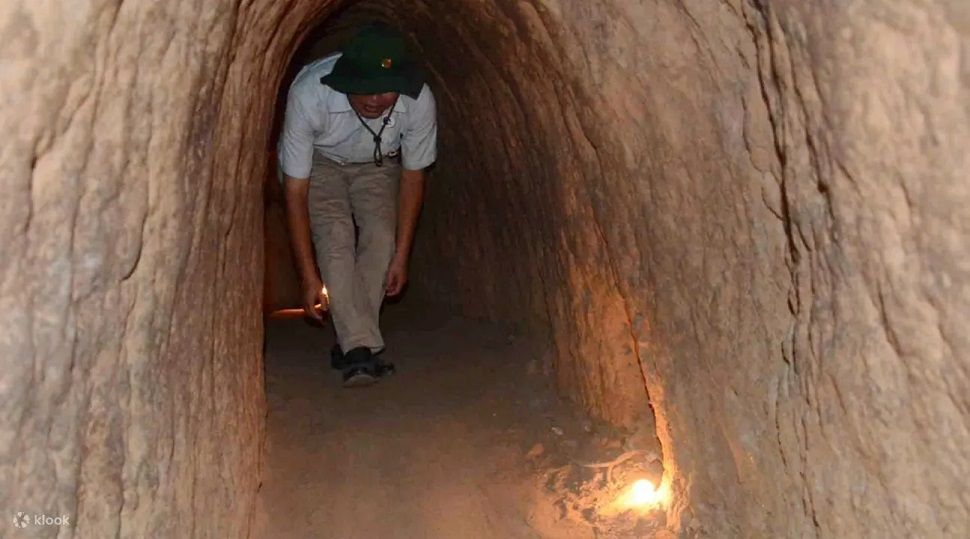
Cu Chi tunnels – Survive undergroud
Table of contents
Having become symbols of Vietnamese resistance to the oppressors, the Cu Chi tunnels, in the suburbs of Ho Chi Minh City (formerly Saigon), are now part of not only the memory of a country and a people, but also what is called memorial tourism, so that every visitor can say, “Never again!” »
The Cu Chi tunnels – The origins
We are in the years 1946-48, in the middle of the Indochina war. Some 70 kilometers northwest of Sai Gon, arms and hands are busy underground. With simple agricultural tools, rather rudimentary, we begin to dig, to clear, to evacuate the rubble of a land resembling laterite, both flexible to excavate and resistant. As resistant as the will of a people who viscerally refuse French colonial authority. This titanic and obstinate work of ants will last 25 years (!)
The first idea was to promote discreet communications between the villages, while allowing the delivery of weapons to the nose and the beard of the French soldiery. The first version, so to speak, is quite simple. Barely twenty kilometers, a few shelters for the soldiers, hideouts for sensitive documents. Almost 20 years later, in the next conflict, in other words during the war of resistance against the Americans, 250 km will take place underground, extending to the Cambodian border and on 3 levels!
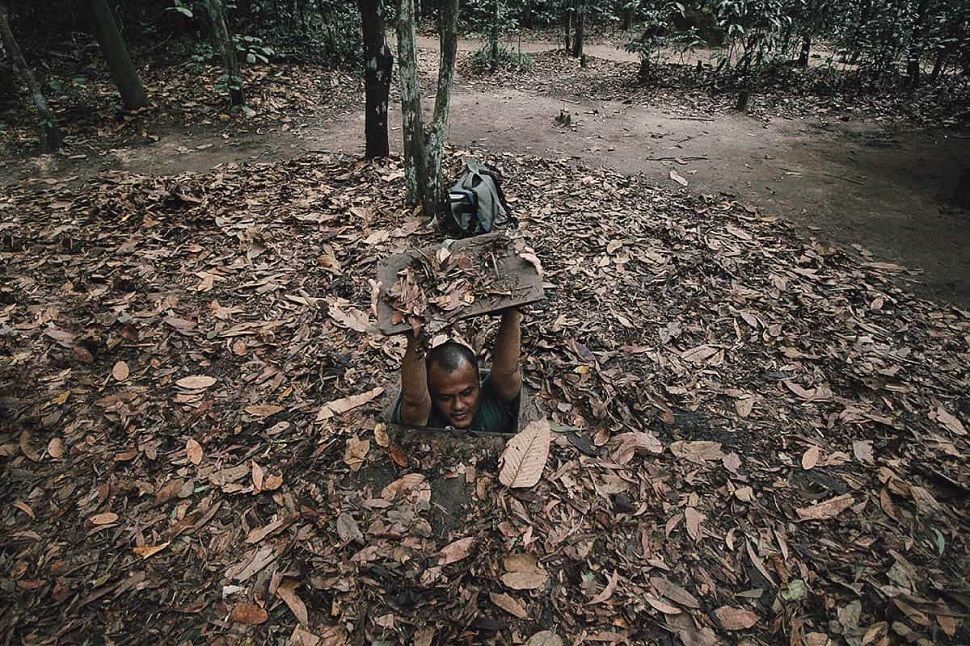
Cu Chi, or underground resistance
It was not always easy to hide the existence of these tunnels and all the activity that went on inside them.
On arriving at the Cu Chi site, the visitor is struck by the treasures of ingenuity deployed to camouflage as effectively as possible an underground city which at the height of the conflict will reach up to 16,000 people.
The starters first. Tiny, very discreet, taking advantage of a jungle environment, they blend into the leaves, like burrows. Some houses in the surrounding villages also had hidden access to the tunnels.
Who says life underground, says stove and arms factory smoke… They will be evacuated far from the point of production, via long vents. Ventilation vents, on the other hand, were often disguised as termite mounds or camouflaged like entrances.
Vietnamese ingenuity
Although very discreet, it was nevertheless essential to remove as much as possible any enemy presence from the site. The Americans suspected something. So they used dogs. Never mind ! Vietnamese resistance fighters used pepper and stole aftershave, soap and other American personal effects to deceive the dogs’ sense of smell… How to put the enemy on the wrong track? Using, upside down, recovery sandals (made from tires). Thus, an observer would have thought that the enemy was marching in a certain direction, when it was exactly the opposite…
And finally, the surroundings were full of traps with formidable efficiency. What is now an attraction (but also a source of pride, depending on which side one is on) was an ingeniously deadly means of survival.
And imagining the worst of the worst, an American having managed to enter one of the tunnels (there were some: they were nicknamed the “rat tunnels”), he would not have gone very far: the passages are very narrow, do not allowing only one person of Asian size to sneak in. Not to mention the phobias that are quick to recall to the good memories of said tunnel rat…
The organization of the Cu Chi tunnels
If the current tourist area has been fitted out for Westerners, you have to imagine this cramped life, zigzagging between 3 and 12 meters underground, sinking there towards a hospital, there towards the living quarters or even here , in the theater where propaganda films were shown and where artists performed to maintain the morale of the Viet Cong.
You have to imagine months in confinement in the air as scarce as food, where insects and snakes gladly invited themselves and where malaria was the second cause of death after war wounds for these underground resistance fighters.
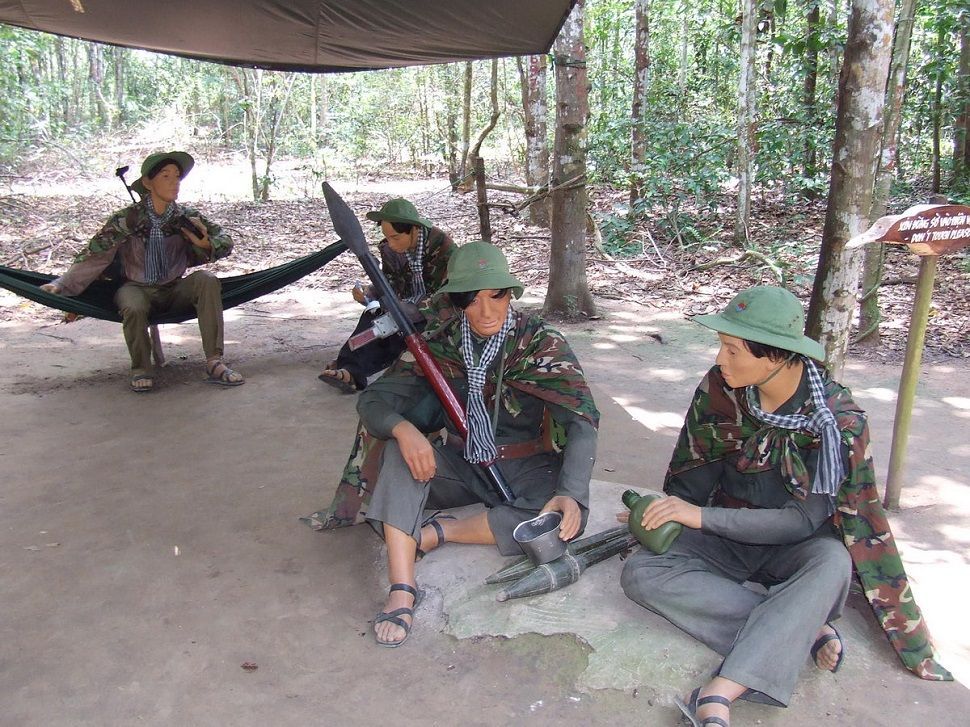
The Cu Chi tunnels between duty of memory and tourist attraction
The Cu Chi Tunnels are on CNN’s list of the best underground attractions in the world. Classified as a special national vestige, this network is preserved in two sectors: Ben Duoc and Ben Dinh. Every year, it welcomes around twenty million visitors of different nationalities. The visit takes approximately half a day, or even a full day, to explore its many surprising corners.
Visit the Cu Chi Tunnels
Best Time to Visit Cu Chi Underground Network
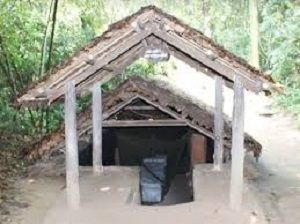 We will preferably choose the dry season, that is to say from October to April. During the rainy season (May to November), if the tunnels resist flooding, they can be muddier than usual and also much wetter.
We will preferably choose the dry season, that is to say from October to April. During the rainy season (May to November), if the tunnels resist flooding, they can be muddier than usual and also much wetter.
We will choose to be there as soon as possible, that is to say as soon as it opens, around 7-8 a.m., in order to avoid the hot weather and the tourist coaches which arrive around 10 a.m.
The tunnels are open from 8 a.m. to 5 p.m., every day of the week, including ferry days.
How to go to Cu Chi tunnels
By bus
To Ben Duoc: From Ben Thanh station, take bus 13 Ben Thanh – Cu Chi and then bus 79 Cu Chi – Dau Tieng. A sign will ask you to complete your journey on foot. For Ben Dinh, departing from Ben Thanh train station, take bus 13 Ben Thanh – An Suong then bus 122 An Suong – Tan Quy, finally bus 70 Tan Quy – Ben Dinh.
This is the cheapest way, but also the most time-consuming (4 hours round trip).
By private car shared or not, by taxi
Perfect for families or small groups (who will share the costs). Count 1h30 journey.
Ben Duoc tunnels
In addition to the tunnels, you will find a snack bar/refreshment bar, a war souvenir shop (if you like kitsch…). The visit begins with the screening of a fifteen-minute film with interesting archive footage.
Ben Dinh tunnels
This is the most visited sector, with its renovated section. It is located near Ben Dinh village, 50 km from Ho Chi Minh city.
Here you are greeted by an explanatory map of the Cu Chi tunnel system. The section of the tunnel open to the public is a few hundred meters south of the visitor center. It winds for 50m through various chambers. The tunnels, unlit, measure approximately 1.20 m in height by 0.80 m in width. A damaged M41 tank and bomb crater near the exit, in a copse of eucalyptus.
At both sites, the visit allows an immersion in the living conditions underground, to discover the ingenuity of the traps. So as to taste boiled cassava served with grilled tofu salt – the specialty of Chu Chi. The cassava is prepared on a hearth called Hoang Cau hearth, which does not emit smoke to avoid being noticed by the enemy.
The two sites being almost identical, it is not necessary to visit them both. Just know that Ben Duoc has the advantage of offering reconstructed and widened tunnels in order to let visitors of western size pass through. And maybe to be more accessible to claustrophobic people. Ben Dinh is more authentic, but less laid out, with narrower tunnels.
It should be noted that one can also visit the tunnels of Vinh Moc in the demilitarized zone in the vicinity of Hue.
Enjoy our special tour to discover them > https://songvoyages.com/en/delights-of-vietnam-21-days/



